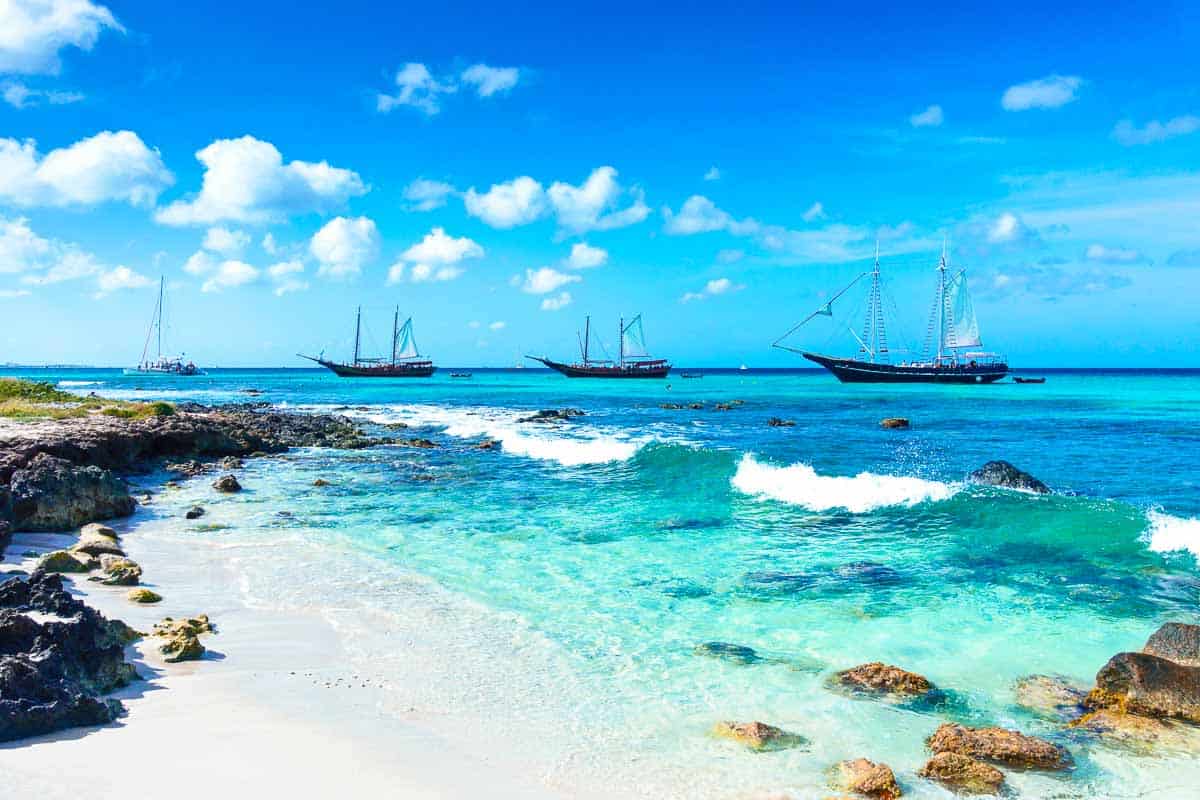Aruba is a small island nation in the Caribbean and a Constituent of the Netherlands. The tropical island’s isolation from South America has given it a special charm that can only be found in the Caribbean.
Located at the Southern Caribbean, the island offers pristine white sand beaches and warm, crystal clear waters while remaining far enough from the hurricane belt, which makes it a perfect year-round destination.
The island is just as beautiful underwater, with incredible, healthy coral reefs, a great diversity of life, and a ton of shipwrecks to explore, all of which are pretty accessible thanks to the conveniently small size of the island.
Here we explore the best Aruba snorkeling options and tell you everything you need to know to plan a trip to this quintessential Caribbean destination.
BEST ARUBA SNORKELING SPOTS IN 2023
ALL THE BEST ARUBA SNORKELING SPOTS
MANGEL HALTO
DIFFICULTY
Intermediate/Advanced
DEPTH
Around 10ft (3 meters)
VISIBILITY
Up to 100ft (30 meters)
ACCESSIBILITY
Shore entry
NOTABLE SEALIFE
Huge elkhorn coral, Surgeonfish, Parrotfish
RENOWNED FOR
Channel, wall, strong currents
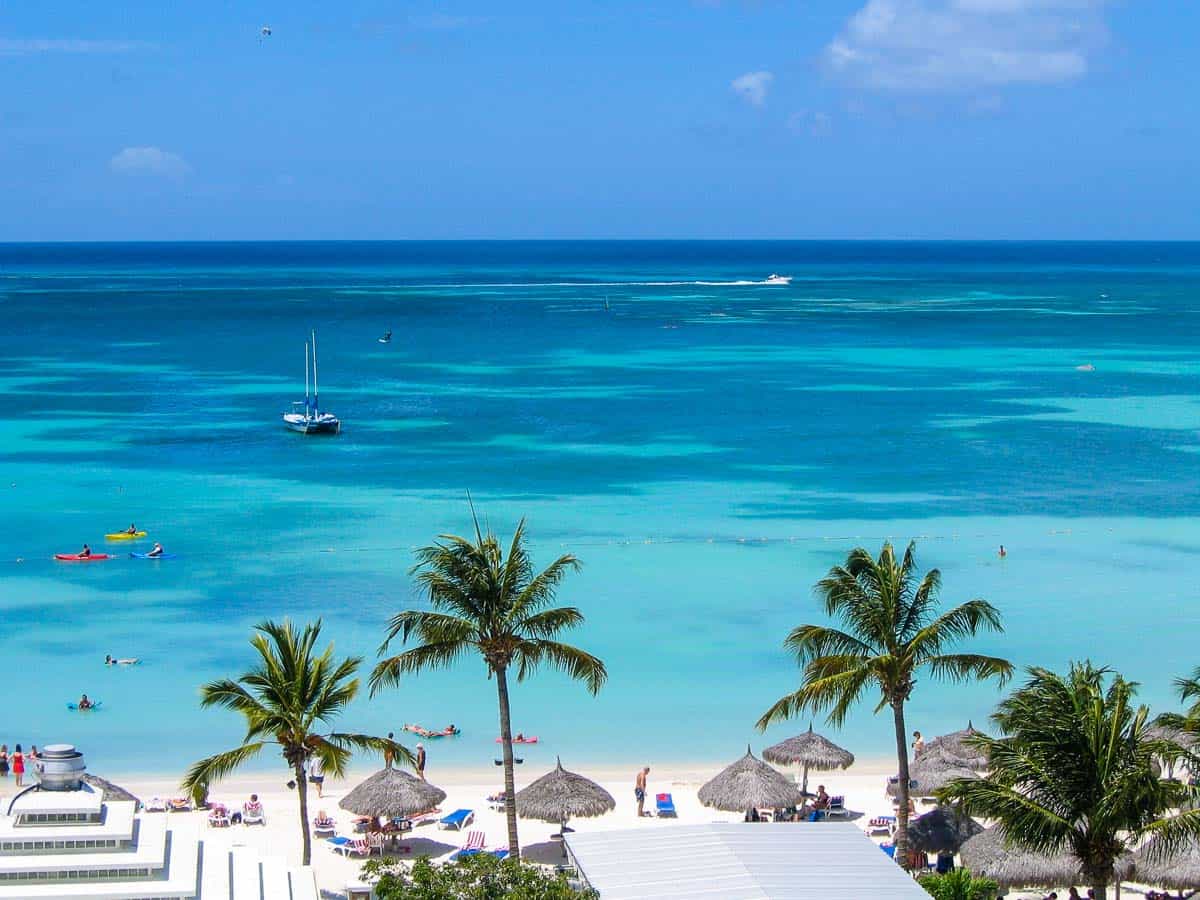
Mangel Halto is known as one of the best snorkeling in Aruba thanks its diversity of options since it covers the inner and outer areas of a healthy, hard coral reef. The site is praised for its near-perfect visibility year-round and the amount of life that can be found in it.
This site, located on the southwestern coast of Aruba, is accessible by road or by tour operators, which are highly recommended if you are not familiar with the conditions and specifications of the site.
Due to its peculiar topography, the site is only suitable for experienced snorkelers, since the channel connecting the reef to the open ocean can create hazardous situations with strong winds or currents.
For calmer conditions, the inner and shallower side of the reef features a beautiful hard coral garden with enormous elkhorn corals, which are the main attractions of the site. If conditions are very good, advanced snorkelers may want to explore the outer side of the reef, a wall with a beautiful seabed that boasts colorful schools of tangs, fusiliers, and probably the best place to spot sharks for snorkeling in Aruba.
At this specific site, it’s important to note conditions before venturing in and to never snorkel alone, since swimming, sometimes a little strenuous, may be required to get back to the beach and there is some boat traffic on one side of the channel.
ANTILLA SHIPWRECK
DIFFICULTY
Intermediate
DEPTH
30 feet (9 meters)
VISIBILITY
40 feet (12 meters)
ACCESSIBILITY
Boat operator
NOTABLE SEALIFE
Tube sponges, Blue tang, Sergeant damselfish
RENOWNED FOR
400ft wreck
At the northernmost point of the island, you’ll find what is considered by many divers and snorkelers the ‘best shipwreck in the Caribbean’, the WWII German freighter Antilla is definitely worth a visit. Thanks to its closeness to the shore, this site is probably the highlight of shipwreck snorkeling in Aruba. The wreck’s bottom rests in a mere 60ft, with the mast rising to 5ft, which makes it perfect for those snorkelers looking to get a history fix while on their vacation.
The ship’s history is always interesting to hear, and Antilla shipwreck snorkeling operators are usually very knowledgeable on the topic and will happily share it with the tour.
Although close to the beach, the Aruba snorkeling site is only accessible by boat due to the boat traffic and the strong currents and rough conditions between the beach and the wreck.
The hull of the ship is now teeming with life and covered in coral and the light filtering through the shallow water gives it a tropical, yet eerie, charm.
The snorkeling in Aruba wreck is suitable for all levels since beginner snorkelers can stay at the top and still get a good sense of the size and shape of the ship while only exploring the mast, while more advanced snorkelers can dive down to have a look at the bow or the huge propellers.
ARASHI BEACH
DIFFICULTY
Beginner
DEPTH
15 feet (4 to 5 meters)
VISIBILITY
Up to 150 feet (45 meters)
ACCESSIBILITY
Shore entry
NOTABLE SEALIFE
Brain coral, Squid, Yellow goatfish
RENOWNED FOR
Coral reef patches
Another incredible site to do snorkeling in Aruba is Arashi beach, the most famous of Aruba snorkeling beaches and a favorite among locals and tourists alike.
Arashi Beach is a long stretch of soft, white sand and is usually a featured beach by many travel magazines and guides. Close to the beach, there’s not much to see, the bottom is sandy and, at best, you get to see a couple of Damselfish, so be sure to enter the water at the right edge of the beach and swim out a little until you start seeing the patches and bommies of soft and hard coral rising from the flat sand. At this point, keep an eye out for reef squid, which usually hang around these areas.
Besides it being a very well-rounded snorkeling in Aruba site, probably the best part of Arashi Beach is the number of amenities at the beach itself. Unlike other more remote sites, Arashi Beach has several bars, restaurants, and equipment rental shacks on the beach, making a perfect spot to spend the day with the whole family.
Additionally, a visit to the nearby California Lighthouse also offers a great way to top off a memorable day out in the water for snorkeling in Aruba.
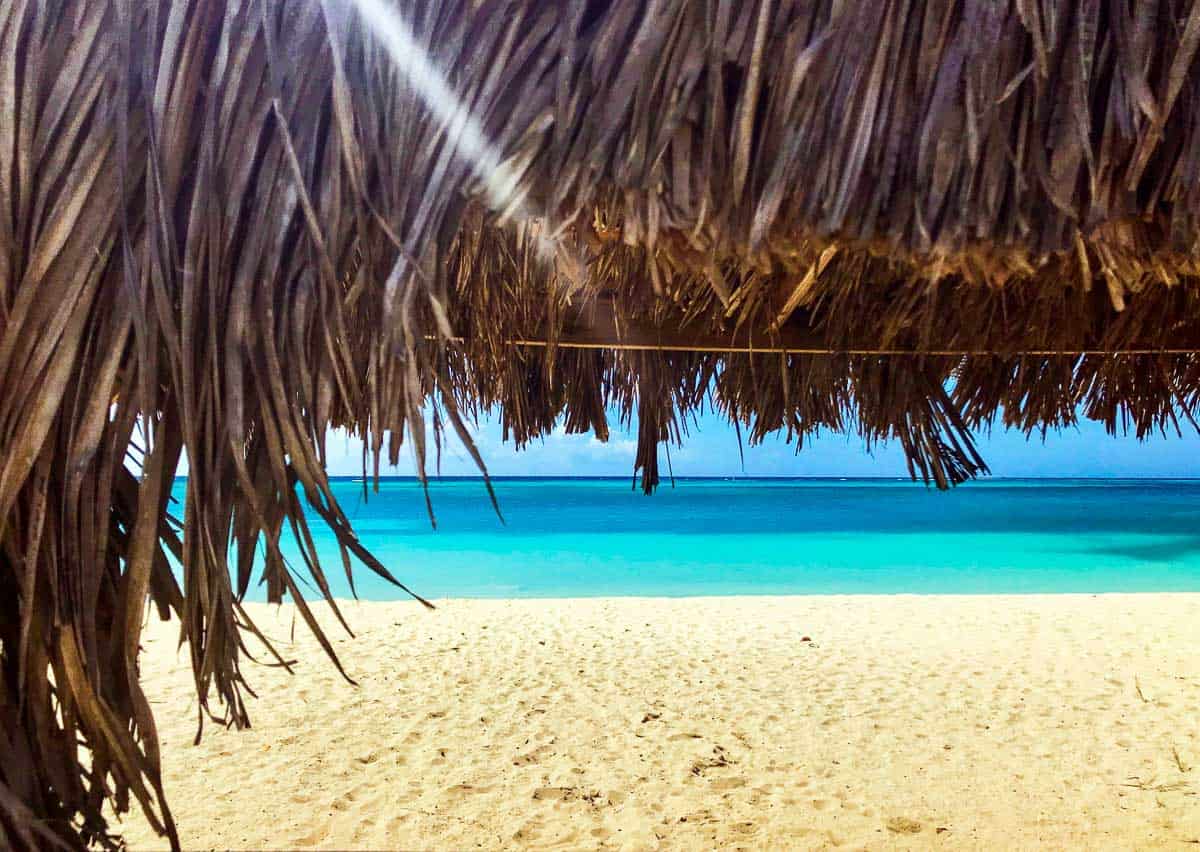
CATALINA COVE AND BEACH
DIFFICULTY
Beginner/Intermediate
DEPTH
12 feet (3 to 4 meters)
VISIBILITY
1000 feet (30 meters)
ACCESSIBILITY
Shore entry
NOTABLE SEALIFE
Green sea turtle, Queen Angelfish, Schooling snappe
RENOWNED FOR
Seagrass beds, Shallow coral reef
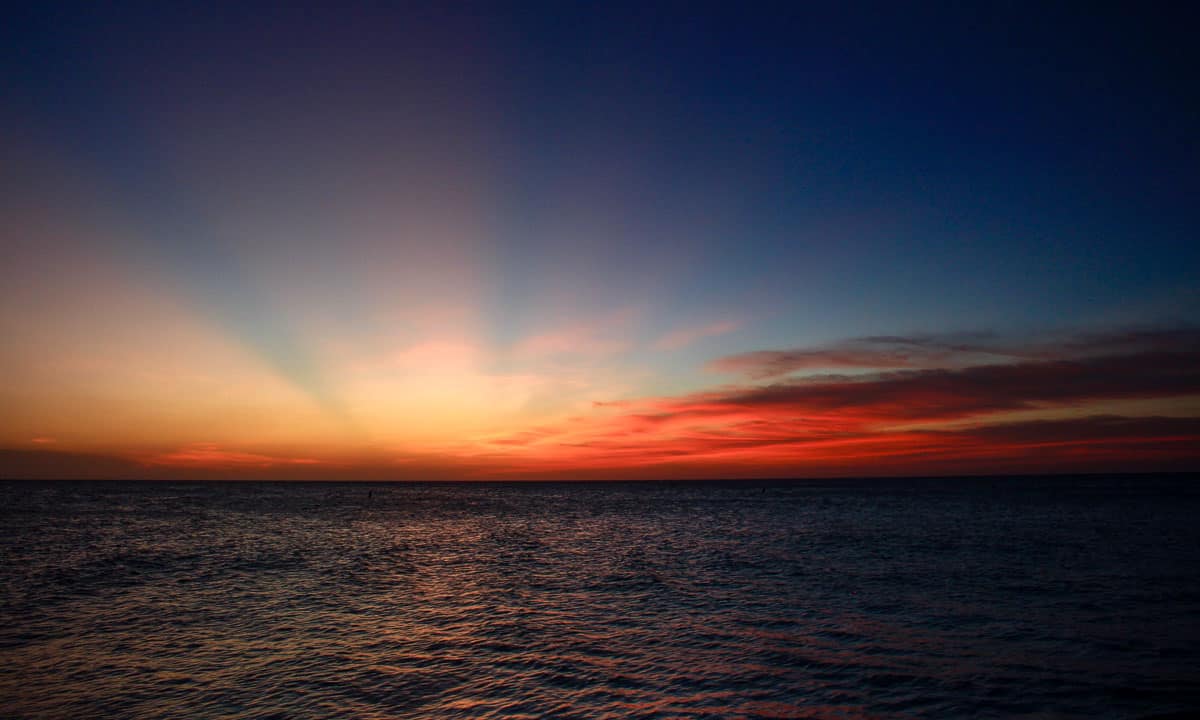
A short walk south of Arashi Beach is Catalina Cove, signature snorkeling in Aruba rocky area with shallow coral reefs and tons of life, further down is also Catalina Beach, another popular stretch of white sand with less coral but lots of seagrass patches where green sea turtles love to hang out.
Both sites are accessible from Arashi Beach, but the terrain is rocky and, at times, slippery, so wearing a good pair of water shoes is strongly encouraged if you plan to walk down there.
Another option is to drive down to Catalina Beach and walk from there, still, Catalina Cove is a little rocky so plan ahead.
Most corals and fish you can see while snorkeling in Aruba can be found in Catalina Cove around the reefs and rocky areas that surround it. Be sure to look inside the rocks for critters hiding in their boroughs like octopuses, lobsters, and moray eels.
Catalina Beach is best done early in the morning when all the turtles are still feeding, as later in the day, the many snorkelers and swimmers in the area tend to scare them away. Note that the seagrass beds where the turtles like to be are a little further out to sea, so some swimming is required to get to them if the current is a little strong or the wind picks up, this Aruba snorkeling site becomes more suitable for intermediate snorkelers.
TRES TRAPI
DIFFICULTY
Beginner
DEPTH
10 feet (3 meters)
VISIBILITY
100 feet (30 meters)
ACCESSIBILITY
Shore entry
NOTABLE SEALIFE
Red cushion sea star
RENOWNED FOR
Sandflat
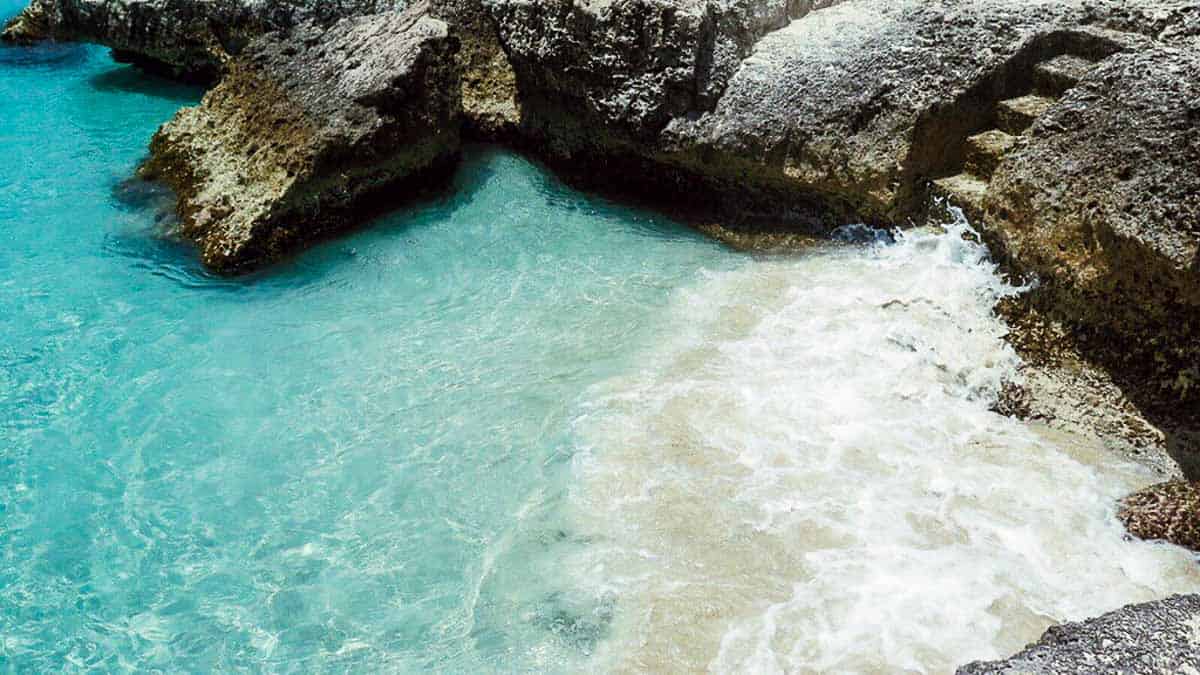
In the same area as Catalina and Arashi Beaches is Tres Trapi or ‘Three Steps’, which refers to the three rock steps that lead to this shallow but amazing site.
Tres Trapi is perfect for people of all experience levels thanks to its closeness to shore, almost complete lack of currents, and accessibility.
Although the site is basically a sandbar with almost no fish or coral structures to see, it is dotted with hundreds of starfish that make for a wonderful site and a great landscape for underwater photographers.
The site’s shallow depth and great visibility make the color of the bright orange starfish pop out and contrast wonderfully with the white sand bottom.
This easy, yet quintessential Aruba snorkeling site is not to be missed.
PUERTO CHIQUITO
DIFFICULTY
Intermediate
DEPTH
15 feet (4 to 5 meters)
VISIBILITY
Up to 150 feet (45 meters)
ACCESSIBILITY
Shore entry
NOTABLE SEALIFE
Filefish, Moray eel, Caribbean painted lobster
RENOWNED FOR
Coral reef, drop-off toward Mangel Halto
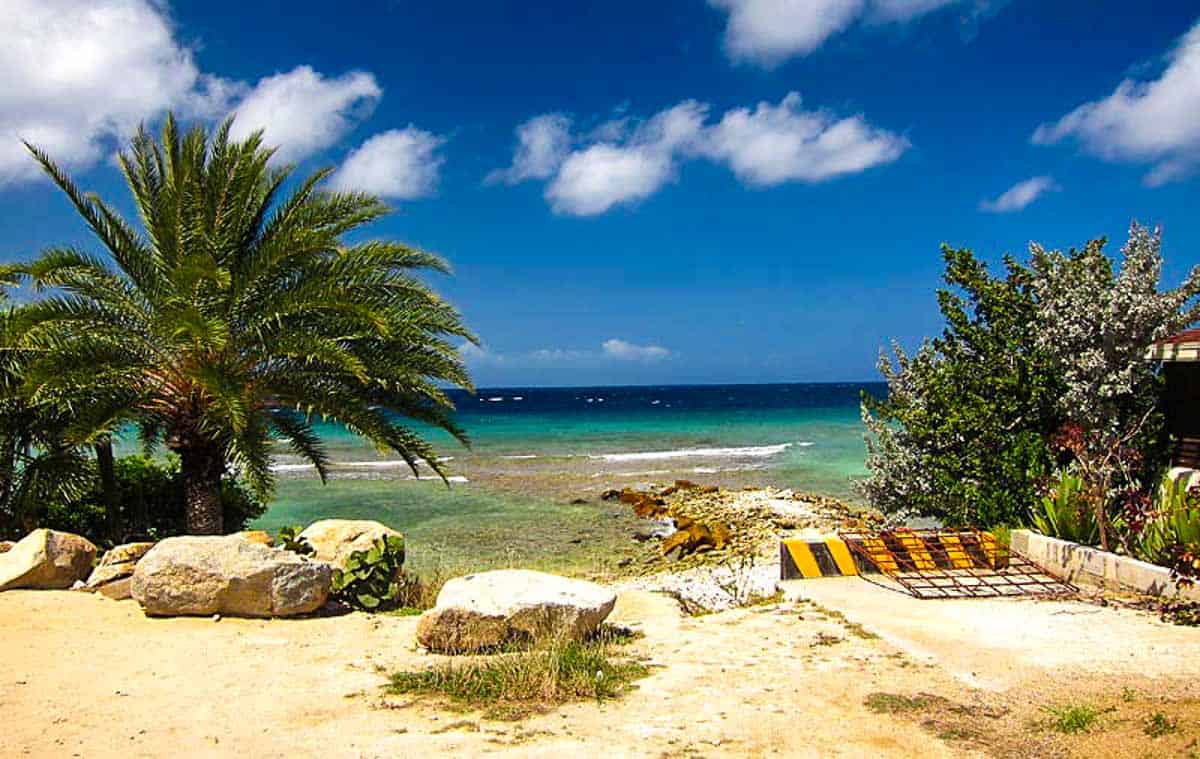
Off Key Largo is hon Pennekamp Coral Reef State Park, which is home to incredibly beautiful coral reefs and the Christ of the Abyss statue. The statue is located seaward of the Key Largo Dry Rocks. This Aruba snorkeling site attracts many divers and snorkelers all year round. The dive site of Christ of the Abyss is relatively shallow, about 25ft (7m) maximum depth. One can enjoy this impressive, 4000 pounds (1800kg) bronze underwater statue while simultaneously spotting sting- and eagle rays. Big schools of fishes will pass by, and the coral formations are extremely rich in color and make this underwater landscape extra special.
Since the dive site is relatively shallow, most dive tour operators also offer snorkel tours with the same boat. This is, therefore, an ideal place to go dive and snorkel with the entire family. Even from the water surface, one can see the statue and experience its intensity. This Aruba snorkeling site is optimal for a family trip and is definitely one of the best Aruba snorkeling places to dive.
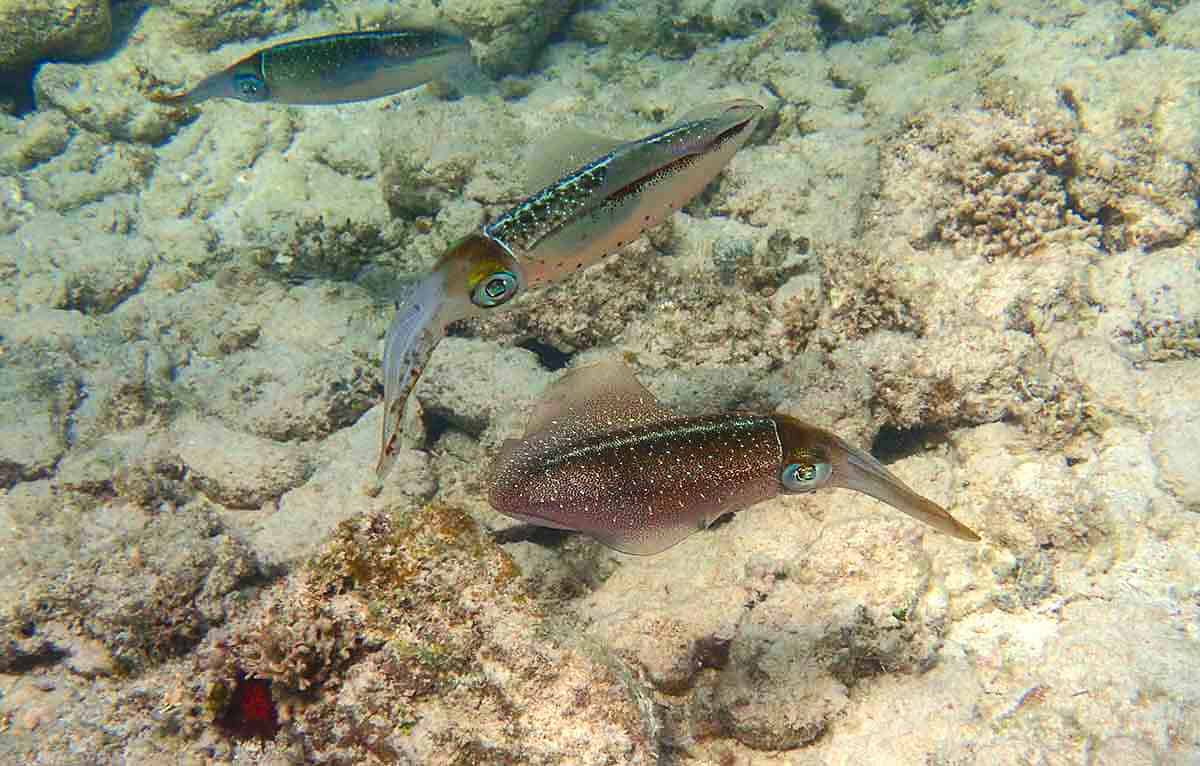
MALMOK BEACH
DIFFICULTY
Beginner
DEPTH
10 feet (3 meters)
VISIBILITY
60 feet (18 to 19 meters)
ACCESSIBILITY
Shore entry
NOTABLE SEALIFE
Sea urchin, Redtail parrotfish, Duster worms
RENOWNED FOR
Rocky reef, Shipwreck
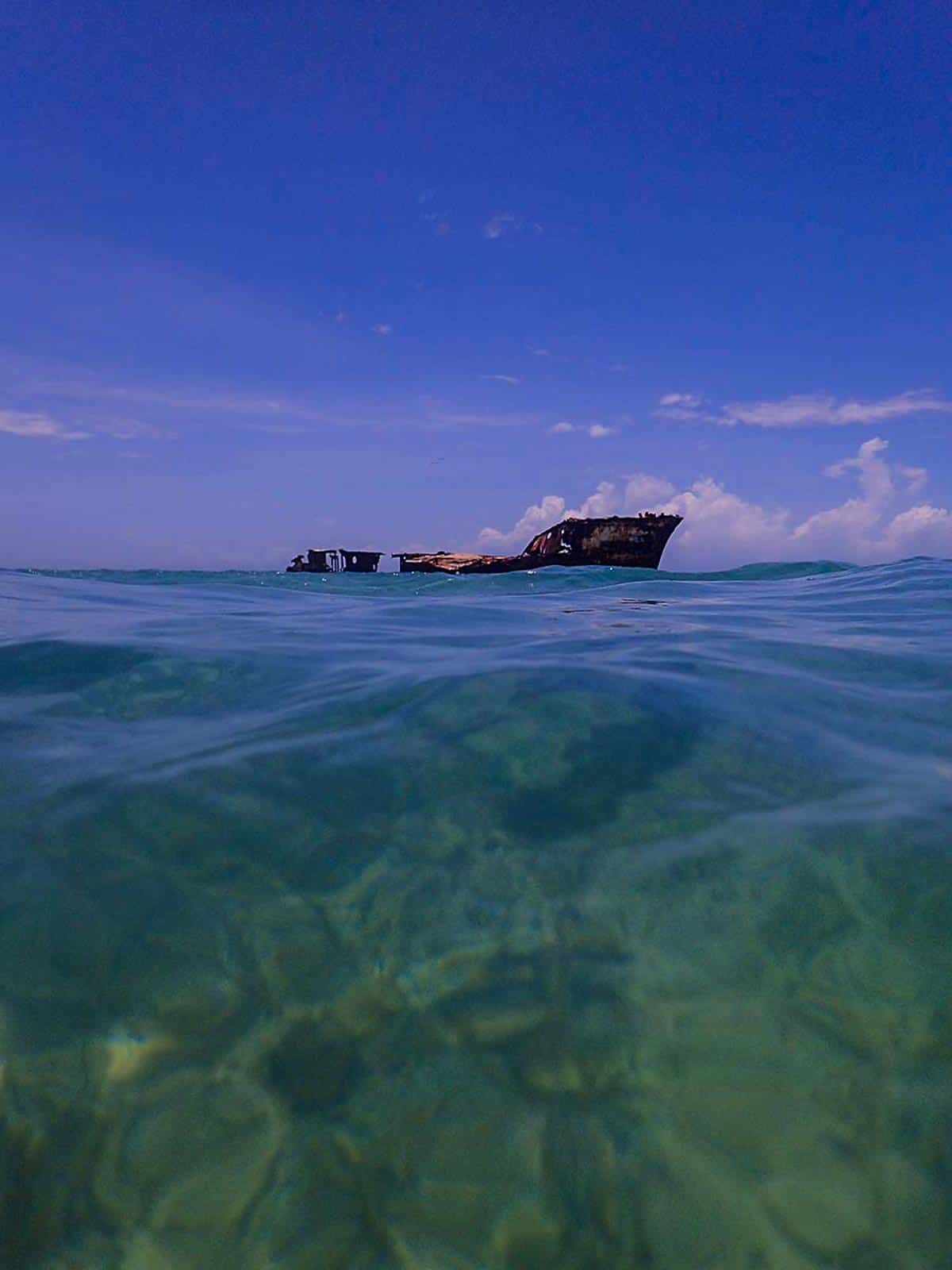
Another popular Aruba snorkeling site in the northwestern side of the island is Malmok, a set of two small and rocky beaches that lead to some of the best snorkeling in Aruba (if you arrive on time).
Malmok is famous for the amount of life that can be found in the rocky crevices and its closeness to the Bamboo wreck, which is easily accessible by swimming, just go toward the hull sticking out of the water.
Because of these awesome characteristics, however, the site is very popular among tours and the only suitable time to visit this site is early in the morning. As the day goes by, dozens of boats and snorkelers visit the area, making visibility horrible and the small beaches very crowded.
If you do manage to go early in the morning, you will most likely be treated to the site’s great conditions and clear, pristine waters.
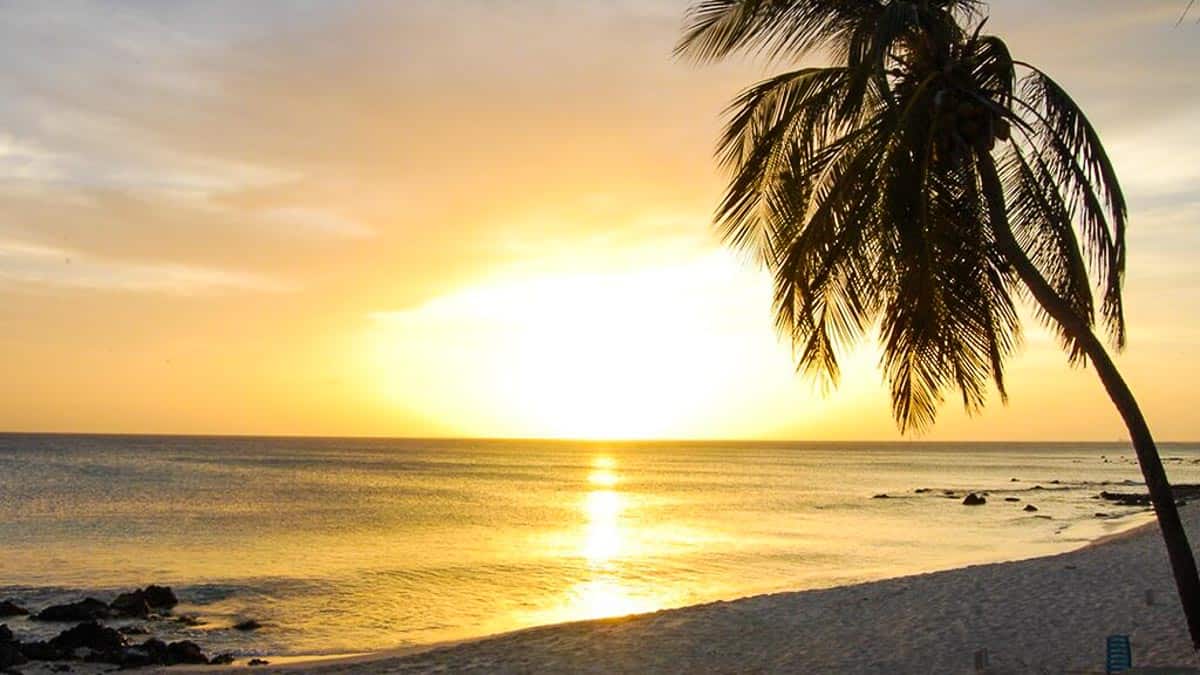
RODGER’S BEACH
DIFFICULTY
Beginner/Intermediate
DEPTH
15 feet (4 to 5 meters)
VISIBILITY
70 feet (21 meters)
ACCESSIBILITY
Shore entry
NOTABLE SEALIFE
Trunkfish, Brain coral, French angelfish
RENOWNED FOR
Seagrass beds, Coral bommies
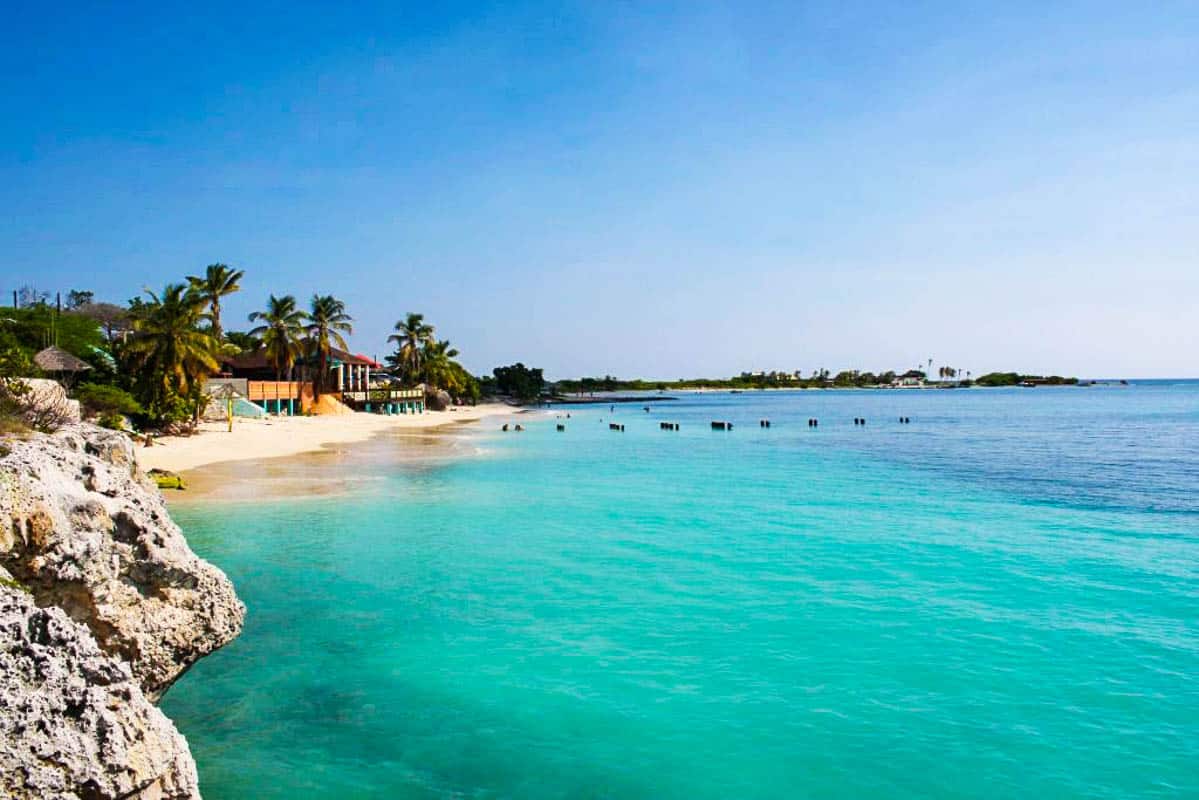
Snorkeling in Aruba is simply not complete without a visit to the south. Rodger’s Beach, located in this pristine and rugged area of the island, is a sheltered site that is full of life.
The beach itself is very attractive to spend the day there or explore the nearby Baby Beach.
Although many recommend Baby Beach while snorkeling in Aruba, we strongly discourage this due to the sites challenging conditions and the lack of interesting things to see (everything worth it is too far out), but Rodger Beach provides good snorkeling while being close to this beach for spending the rest of your day.
Rodger’s Beach is more secluded than the northern beaches and snorkeling is, therefore, more pristine and enjoyable.
We do recommend assessing the conditions before Aruba snorkeling since wind and currents can be hazardous at this site.
BOCA GRANDI
DIFFICULTY
Advanced
DEPTH
20 feet (6 meters)
VISIBILITY
Around 100 feet (30 meters)
ACCESSIBILITY
Shore entry
NOTABLE SEALIFE
Green sea turtle, Surgeonfish, Sea fan
RENOWNED FOR
Coral pinnacles, hard coral colonies
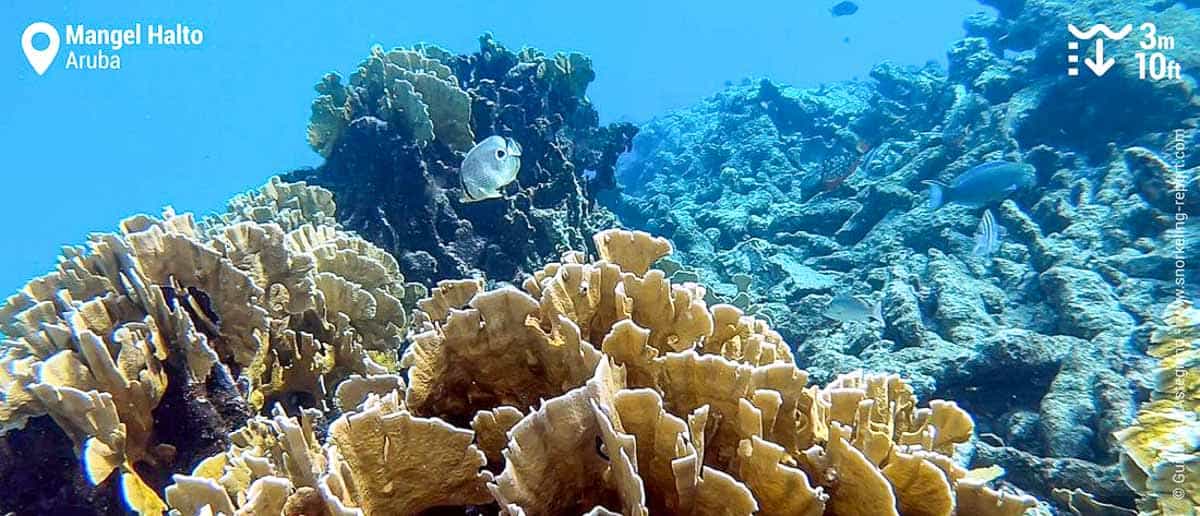
Usually a windsurfing spot, Boca Grandi is only accessible to snorkelers and swimmers when the conditions are perfect. There needs to be absolutely no wind, otherwise, the beach is not accessible for swimming at all.
However, if you happen to be at the right place at the right time, Boca Grandi is an excellent spot for spotting turtles and Aruba snorkeling around beautiful coral pinnacles without the crows.
Because of the site’s exposure and current, it is only recommended for strong swimmers and confident snorkelers, this site is not suitable for beginners.
Even when the conditions are windy, the long, pristine stretch of white beach and turquoise waters of Boca Grandi are worth exploring.
RINCON
DIFFICULTY
Intermediate
DEPTH
15 feet (4 to 5 meters)
VISIBILITY
Up to 150 feet (45 meters)
ACCESSIBILITY
Shore entry
NOTABLE SEALIFE
Parrotfish, Sergeant damselfish, Green sea turtle
RENOWNED FOR
Colorful chalets, Rocky bottom
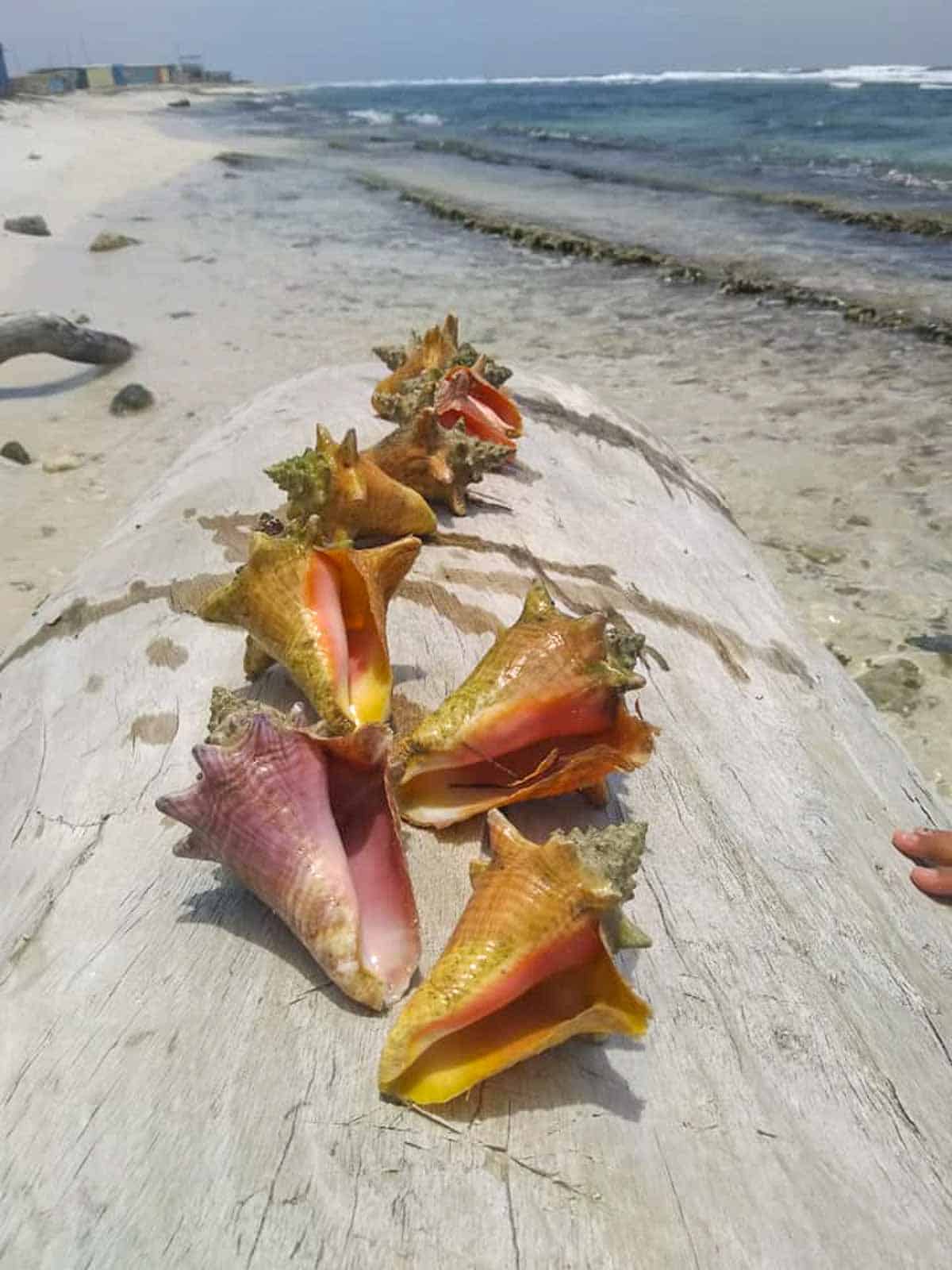
One of the least explored Aruba snorkeling sites is Rincon Beach. This shallow lagoon has almost no tourists and is a picturesque and colorful little town by the beach. Mostly frequented by locals, Rincon, just as Boca Grandi, is only suitable for snorkeling when conditions are right.
There is the occasional hard coral colony and a lot to see around the rocks, although we recommend bringing a good pair of water shoes since the area can be a little rocky.
BEST ARUBA SNORKELING
Snorkeling Guide
BEST SNORKELING MONTHS
Year-round. Despite the occasional winter squall, Aruba snorkeling is a great spot year-round. Aruba is located further away from the hurricane belt and it is seldom affected by these storms. Some even claim hurricane season to be the best time to visit Aruba because of the reduced wind.
RAINFALL
October through December. These months are the ones that see the most rain, with an average rainfall of 3.2 inches and a temperature drop down to 80ºF.
TEMPERATURE
February to April see the coldest water. Water temperatures in Aruba range from 80-84ºF, with the coldest months being February, March, and April.
BEST ARUBA SNORKELING
Traveler's Guide
TIME ZONE: UTC-4
CURRENCY: Aruban Florin (AFL)
CALLING CODE: +297
ELECTRIC VOLT: 127V
PLUG TYPE: Flat blade plug (type A and B)
MAIN AIRPORT: Queen Beatrix International Airport (AUA)
NOTABLE DIVING LANDMARKS: Famous for healthy coral reefs, great visibility, and shipwrecks.
BEST ARUBA SNORKELING
FAQs
1. Is there good Aruba snorkeling?
Of course! Like most of the Caribbean, Aruba offers snorkelers warm, clear waters, and an amazing variety of life.
2. Where is the best snorkeling in Aruba?
It is hard to pinpoint the best place to snorkel in Aruba, but Noord has the highest concentration of snorkeling sites.
3. Can you snorkel from the shore in Aruba?
Many Aruba beaches offer snorkeling, so it is easy to find a site with a shore entry.
4. Can you swim with dolphins in Aruba?
Yes! Sometimes wild dolphins interact with snorkelers in Boca Catalina.
5. Are there sharks in Aruba waters?
Yes, although not a lot. Also, the usual snorkeling sites have enough people to scare them away.

6. What fish can you see snorkeling in Aruba?
Tropical fish like parrotfish, French angelfish, schools of blue tang, the invasive Lionfish, and much more.
7. Are there coral reefs in Aruba?
Yes, the Caribbean is famous for its coral reefs and Aruba is no exception. The highlight of these reefs are the Elkhorn coral gardens.
8. How much does it cost to go snorkeling in Aruba?
Depends on how you do it. An operator could charge around USD 100 or more for a snorkeling tour, but there are plenty of options to do it by yourself.
9. Snorkeling in Aruba for free?
There are many sites with shore entries where you just have to take your gear and you’re good to go. A good example is Arashi Beach.
10. Where to buy snorkeling gear in Aruba?
Some good Aruba snorkel operators selling gear are Aruba Watersports Center and Happy Divers Aruba.
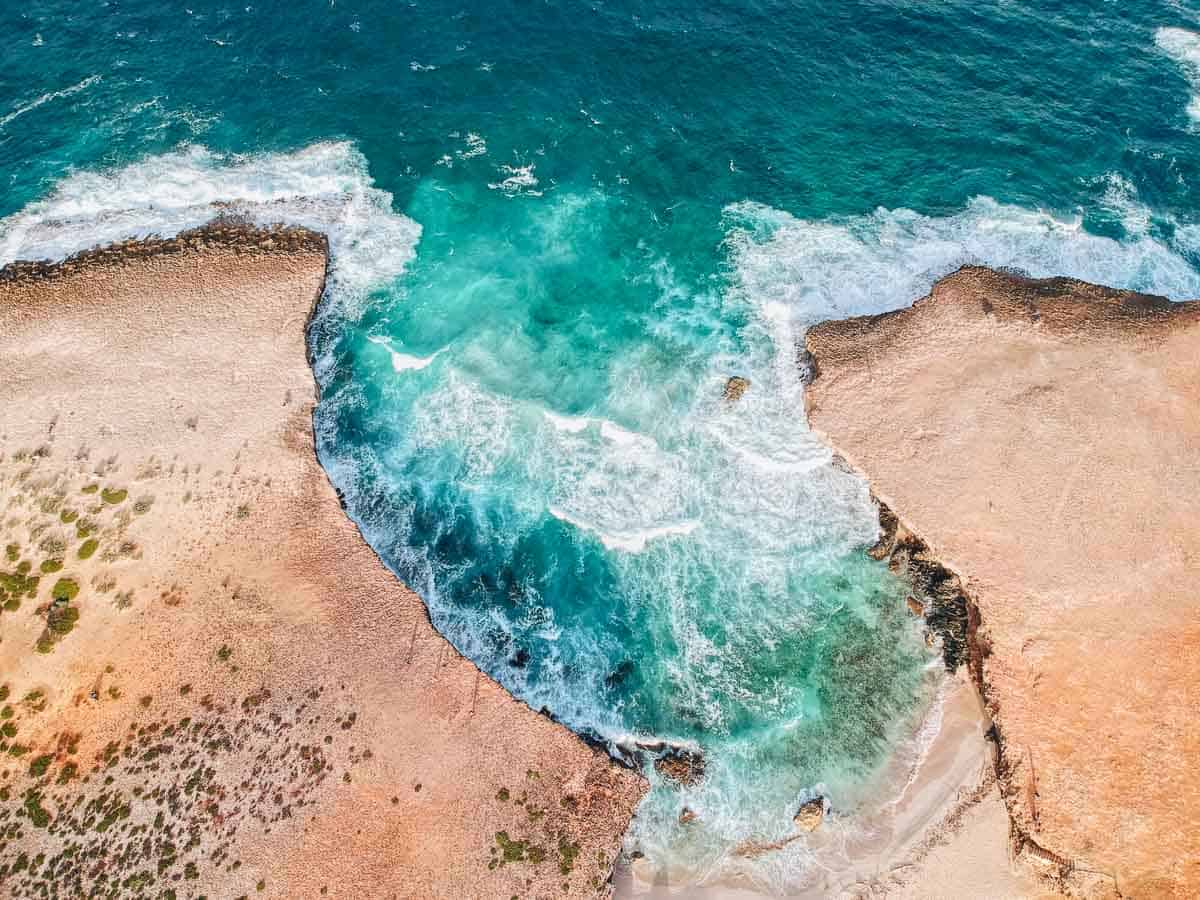
REACH OUT
As always, we create our content with you, fellow adventurers, in mind. So, how’d we do? Did you find this informative? Did it help you make a decision? Did we miss anything? We’d love to hear from you below. Thanks for reading and we hope your next adventure is a great one!


